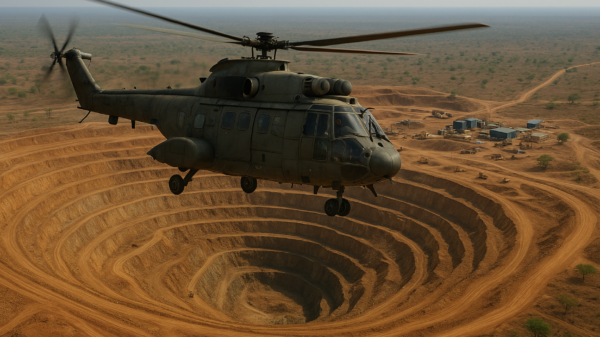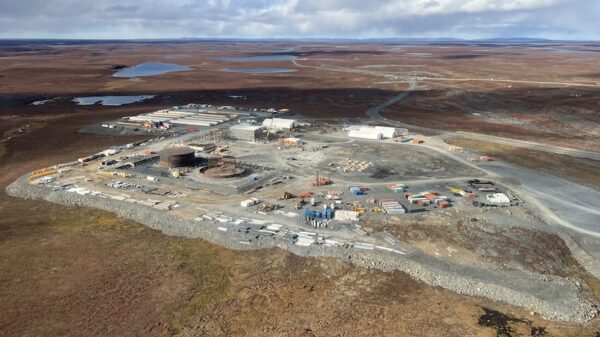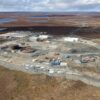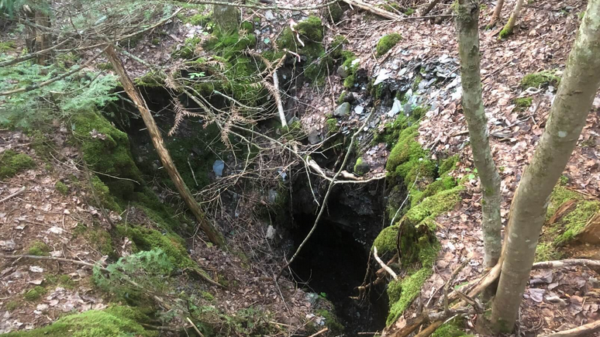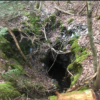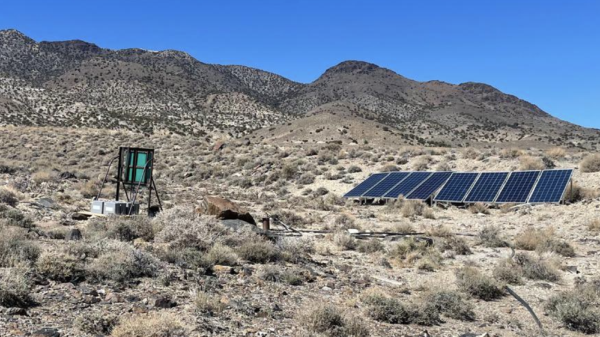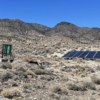The results of a Galiano Gold (TSX: GAU) (NYSE: GAU) feasibility report for its West African joint venture with Gold Fields (NYSE: GFI) show the project will break even in 2023, assuming production achieves the top end of guidance and the price of gold remains high.
At present, the exploration budget for the Asanko Gold Mine (AGM) is estimated at USD$15 million. This includes 40,000 metres of drilling, as well as all the ground geophysics, trenching, sampling and regional mapping.
Galiano also believes investment in 2023 will provide a solid foundation for the next phase of the operation. The 2023 exploration program is targeting discoveries on unexplored greenfield areas of the AGM tenements, and looking to increase the mineral reserve and mineral resources at the known deposits.
The mineral reserve estimate underpinning the feasibility study forms the basis of a revised life of mine plan at the AGM. This encompasses four main open pit mining areas: Abore, Miradani North, Esaase and Nkran, and two satellite deposits at Dynamite Hill and Adubiaso.
“On the back of significant exploration success, the new life of mine plan now includes four cornerstone deposits at the Asanko Gold Mine. The plan demonstrates a solid production profile averaging 217,000 ounces per year with an extended mine life through 2031,” said Matt Badylak, Galiano’s president and chief executive officer.
Read more: Calibre Mining gold discovery could breathe life into historic mining community
Read more: Calibre Mining budgets $29M for 2023 exploration in Nevada and Nicaragua
Galiano analysis shows high value proven and probable mineral resources
A feasibility study is a detailed analysis conducted to evaluate the technical and economic feasibility of a proposed gold mining project.
Mining companies conduct this after a pre-feasibility study for a more detailed assessment of the project’s viability.
The study includes a comprehensive analysis of various factors such as geological conditions, mineral resources, mining method, processing technology, capital and operating costs, market demand, financial feasibility, management feasibility, risk analysis, and environmental and social impact assessment.
A feasibility study determines what mining and processing methods would work best. Examples of mining methods include open-pit mining while heap leaching is an example of a processing technology.
The final component of a gold mining feasibility study involves determining operating and capital costs. It involves estimating the capital expenses required in mine development, building the processing plant and other infrastructure. Also, the operating costs to operate at the mine and process the gold ore.
Galiano’s study shows an operating plan with a total life of mine production of 1.85 million ounces of gold at an all-in-sustaining cost (AISC) of USD$1,143 per ounce. Production during the life of mine averages 217,000 ounces of gold per year. Considering the gold price at USD$1,700 per ounce, the AGM has an after-tax net present value (NPV) discounted at 5 per cent of USD$343 million.
The AGM highlights show a 100 per cent basis using a base case of USD$1,700 ounces of gold. The project shows strong mine economics at USD$478 million per tax NPV and USD$343 million after-tax NPV.
Read more: Calibre Mining strengthens management team with two new vice presidents
Read more: Calibre Mining 2022 operating results show year round gold production of 222K ounces
Galiano and Gold Fields JV shows strong cash position
In this case, the AGM is also highly leveraged to the price of gold, showing an after-tax NPV of USD$535 million, at USD$1,900 per ounce of gold. Also, it factors in low cash costs, with USD$905 per ounce average total cash costs, and USD$1,143 per ounce average all in sustaining cost (AISC). It also benefits from an increased production profile with an annual average gold production of 254,000 ounces from 2025 to 2030, inclusive.
The mine shows reinstated proven and probable mineral reserves at 2.068 million ounces of gold. Furthermore it has increased measured and indicated mineral resources of 3.504 million ounces of gold, representing a 21 per cent increase in total ounces, compared to the previous mineral resource estimate from February 28, 2022.
Finally, an increased inferred mineral resources estimate with 1.084 million ounces, which is an increase of 251 per cent in total ounces, compared to the previous mineral resource estimate from February 28, 2022.
Mining contractors are expected to be in operation at Abore during Q4 2023.
The joint venture also held USD$91 million in cash at the end of 2022, placing the AGM in a strong position to complete the life of mine plan, starting with the restart of mining later this year.
The processing facility operates at 5.8 million tonnes per annum, and will continue to do so until mid-2031.
The life of mine is expected to produce 1.846 million ounces of gold from a reserve of 2.068 million ounces. The weighted average recovery for such is 89 per cent.
Current ore stockpile totals 7 million tonnes
“Restructuring our operating cost base in 2022 has in part enabled the life of mine plan to achieve all-in-sustaining costs of USD$1,143 per ounce, which is expected to generate approximately USD$500 million in cumulative cash flow over the mine life.
Significant opportunities also remain to further enhance the asset through both the continued optimization of operations, and exploration success on the highly prospective Asankrangwa gold belt,” said Badylak.
The current stockpile of ore inventory totalled 7.2 million tonnes of 0.67 g/t gold as of December 31, 2022. There’s enough tonnage and quality to operate until the Abore pit is ready to produce the majority of mill feed.
The company anticipates this by Q2 2024.
The AGM has a single valley tailings storage facility, which has a total of six stages. The seventh stage is presently under construction and involves the amalgamation of the fifth and sixth stage. The facility design includes a total of eight stages, providing storage for an additional 51 additional dry tonnes of tailings.
The AGM site is an established operation and most of its infrastructure is in place to support the life of mine. It possesses a carbon-in-leach process plant with various structures, including offices, stores, workshops and reagent storage mixing facilities.
Also, an administration block, exploration offices, core storage area, medical clinic and laboratory, and accommodation facilities.
Additionally, it has multiple boreholes for water supply and a water treatment plant. It also gets it power from a 161 kV incoming power line from the Asawinso substation. The site is accessible via sealed public roads and there’s an airstrip located next to the mill.
Operating costs come from multiple different sources
There is an existing 28 kilometre haul road connecting Obotan and Esaase, which supports hauling Esaase ore to the mill. Galiano intends on constructing an 11 kilometre haul road to the Miradani North deposit between 2023 and 2024.
The operating costs come from multiple different sources and assumptions. The first is mining unit costs, which have been estimated based on recent competitive tenders. Also, processing unit costs, estimated from first principles and compared with historical annual process costs.
Additionally, general and administration costs are based on ongoing and anticipated costs.
The company is still finding ways to optimize its mining methodologies for all its deposits. For example, Galiano states it could upsize planned mining equipment, therefore reducing operating costs and increasing mining advance rates. This would reduce the duration of pre-stripping.
The AGM could use operating technology improvements as part of its standard operating procedures before mining starts. This would improve productivity and safety performance.
The AGM also holds the largest land package in the Asankrangwa Gold Belt at 476 square kilometres of land tenements. The next step is to determine if expanding reserves and extending mine life further through testing for mineralization extensions at length and along strike is a viable option.







